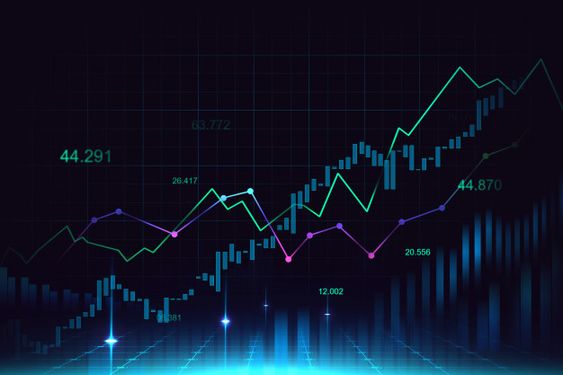Volatility is defined as the frequent and rapid variations in the price of a given asset. Every market experiences some level of unpredictability. However, forex is inherently volatile. You’ll be able to handle unpredictable exchange rates and choose the correct currencies to trade if you understand forex volatility. When deciding on position size, currency pairs, and entry and exit points, volatility is one of the aspects to consider.
Volatility refers to an asset’s price changes and is defined as the difference between the opening and closing values over a given period. It’s also determined by how quickly prices rise or fall. The market volatility is a specific indicator of the investment’s risk. The riskier a deal is, the higher the volatility, and vice versa.
Volatility Measurement
To calculate volatility, you must examine price movements over a specified period. For example, a currency pair is deemed highly volatile if its exchange rate varies rapidly over a short period. In contrast, if the rate fluctuates slowly over a longer period, the volatility is low.
You’ll notice that some currency pairs or individual currencies in the forex market are more volatile than others. Emerging market currencies, for example, or exotic currency pairs, are usually more volatile than major currency pairs or safe currencies.
Turkish Lira, Indian Rupee, and Mexican Peso are all popular emerging market currencies in forex trading. The Japanese Yen and the Swiss Franc are two safe-haven currencies. In addition, the US dollar is sometimes used as a safe-haven currency.
What Causes Price Volatility
Numerous factors, such as economic considerations such as interest rate changes and changes in fiscal policy, can cause forex volatility. Political happenings around the world have also contributed to market volatility in recent years. In other words, market volatility is triggered by any circumstance that influences investor behavior.
It’s worth noting that for a market to be called volatile, it must have a price fluctuation of more than 1% over a long period.
Volatility is a common occurrence in forex, and a skilled trader knows how to deal with it. A tumultuous market can provide an opportunity to earn, but only if you know what you’re doing. Starting small and carefully selecting your bets is a frequent method for dealing with volatility. Because the fluctuating markets are unpredictable, never enter a transaction with overconfidence. You must be able to fine-tune and make modifications at any time. Develop the ability to make decisions without being emotionally involved. To make decisions, apply logic and knowledge from your study, and stay focused while tracking your trades.
Volatility Comes in a Variety of Forms
Historical volatility
This is a gauge of price variations in the past year or so. The asset is regarded as more volatile and risky if its price has departed significantly from its average over this period. Historical volatility, on the other hand, does not provide insight into future trends or price direction. It’s a record of what happened in a certain period under specific circumstances, and it can’t be extrapolated to predict future prices.
Implied volatility
This is a method of anticipating future prices by analyzing the price fluctuations of options. As the price of options rises, so does the volatility, and vice versa. Future volatility is another name for implied volatility.
Market Volatility
This relates to how quickly prices in a certain market fluctuate. This is characterized by a high amount of ambiguity.
Market Volatility And Liquidity
The speed or ease with which a market can execute trades is referred to as liquidity. It is usually characterized by the full range of active traders and trading volumes. Not only is the currency market extremely volatile, but it is also quite liquid. Because of the high liquidity, forex trading is favorable because it is available 24 hours a day throughout trade days. Daily, the currency market handles around $6 trillion in transactions.
Price volatility is influenced by market liquidity. The lesser the price volatility, the more liquid the market. This is why the most widely traded currency pairings, such as the USD/GBP, do not see large price fluctuations.
If you understand forex volatility, you’ll be able to deal with volatile exchange rates and pick the right currencies to trade. You can enroll Capitalvarsity Forex trading course if you want to understand the volatility in the forex market in depth after completion of this course, you’ll be able to understand the forex market better.

